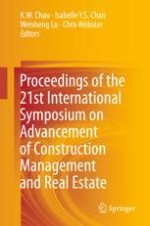2018 | OriginalPaper | Chapter
13. A Whole Life Cycle Group Decision-Making Framework for Sustainability Evaluation of Major Infrastructure Projects
Authors : B. Xue, H. Xu
Published in: Proceedings of the 21st International Symposium on Advancement of Construction Management and Real Estate
Publisher: Springer Singapore
Activate our intelligent search to find suitable subject content or patents.
Select sections of text to find matching patents with Artificial Intelligence. powered by
Select sections of text to find additional relevant content using AI-assisted search. powered by
